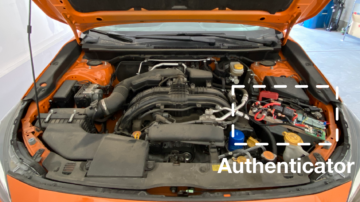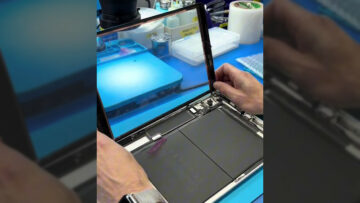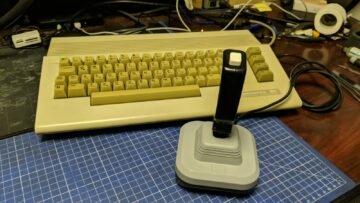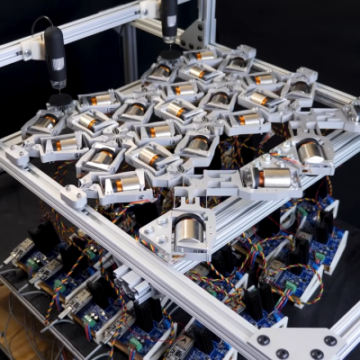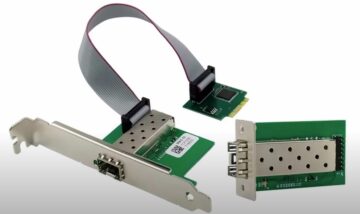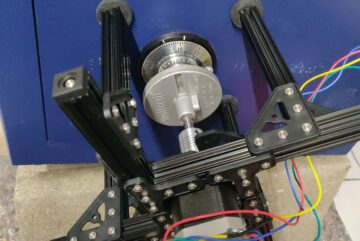There was a time when the gulf between a new computer and one a decade or more old was so large as to be insurmountable; when a Pentium was the chip to have an older computer had a 16-bit 8086 or 286. Here in the 2020s, though, that divide is less stark. While a machine from the mid-2000s may no longer be considered quick, it can still run modern and useful software.
The problem facing the owner of such older hardware though is that as operating systems advance their requirements and eclipse their machine’s capabilities. A perfectly good machine becomes less useful, not because the tasks it needs to be used for are beyond it, but because the latest OS is built with higher-spec hardware in mind. The subject of today’s test is an operating system designed to make the best of older hardware, and it’s one with a pedigree. Damn Small Linux, or DSL, first appeared in 2005 as a tiny distro for the old machines of the day, and after a long hiatus it’s back with a 2024 edition.
Old Stuff Is Pretty Fast, These Days
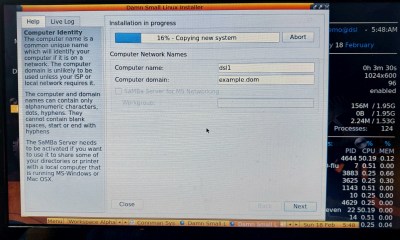
So much time has passed since the last DSL release, that what’s considered an old or low-spec computer has moved forward. Thus DSL is no longer the 50 megabyte mini-CD ISO of yore, and has moved to the 700 megabytes of a full-sized CD. This is still a significant constraint, but the extra space means that the new DSL 2024 can provide something much closer to the full-featured desktop OS that people expect.
It has a choice between the Fluxbox or JWM window managers, it has BadWolf as its default browser, and AbiWord and Gnumeric as its office applications. Under the hood it borrows heavily from the AntiX live Linux distro, and the version we’re testing is very much an alpha. I’ve got the perfect machine to test it on, a late-2000s HP netbook with an annoyingly slow 32-bit single-core Atom processor, so it’s time to download the ISO and give it a try.
The first experience was disappointing, because the ISO wouldn’t boot when installed on a Flash drive. Who’s got a spare blank CD-ROM hanging around in 2024? Certainly not me: while I’m certain I still own some, I think they’re packed away in storage somewhere. So it was time for a bit of fault finding, which led me to isohybrid, part of the syslinux package. This tool performs the magic to make an ISO 9660 file bootable on a Flash drive, something that I guess I should know more about than I do, given that ISOs were my entire life for a while. It did the trick though, and after a false start with corrupted video and booting into a preconfigured safe video mode, I was soon in the DSL installer.
It’s a relatively painless process as it is with so many modern Linux distributions, and after the usual questions about locale and disk allocation it was ready to reboot. Installing 700 megabytes of software doesn’t take long, and my netbook was booting into its new OS in short order. Here the folly of trying an alpha release of a new Linux distro shows itself, because naturally, the wireless network on the little HP was unrecognised. I can say that the OS felt snappy on a 32-bit Atom, but that was it for that machine in this test.
Finally, A Stripped Out OS With A Wrencher-Capable Browser!
 Happily I was able to put it on a vanilla Intel Core Duo Dell laptop and continue. The network connected without issues, and it was time to get stuck in.
Happily I was able to put it on a vanilla Intel Core Duo Dell laptop and continue. The network connected without issues, and it was time to get stuck in.
As always my task was to do my everyday work of editing Hackaday, and since DSL 2024 uses BadWolf as its browser it was time to fire that up and give the Wrencher a try. Since this browser uses the WebkitGTK engine I expected it to work, and it took me without problems into both the main site and the WordPress back end. This piece has mostly been written on it, just to underscore the Daily Drivers title. It was perfectly usable though understandably not fast, but it compared favourably to Firefox on Lubuntu on the same hardware.
As shipped, DSL 2024 doesn’t come with GIMP, so I couldn’t fix any Hackaday graphics. But there we come to the difference between this DSL and the original. This is a derivative of ArtiX, which is in turn based upon Debian, so I should be able to run apt in search of new software. And so it turned out, first I was able to run the usual software update, then install my graphics package of choice. The original DSL was a much more custom distro, so this access to the full Debian repository is certainly useful.
DSL 2024 may still be in alpha status and perhaps a few things won’t work, but it’s certainly a stripped-out minimialist 32-bit distro that runs well on the 2000s-era hardware I gave it. That it’s a Debian derivative makes it a leap away from the original DSL, but perhaps given that so much time has passed the two distros shouldn’t be seen in the same light. Certainly the ability to install extra software easily turns it from a novelty into something really useful. When a later version supports that netbook WiFi card, I think it’ll find a permanent home there, turning a barely useful machine into something I can edit Hackaday on if I need to. Definitely a win.
- SEO Powered Content & PR Distribution. Get Amplified Today.
- PlatoData.Network Vertical Generative Ai. Empower Yourself. Access Here.
- PlatoAiStream. Web3 Intelligence. Knowledge Amplified. Access Here.
- PlatoESG. Carbon, CleanTech, Energy, Environment, Solar, Waste Management. Access Here.
- PlatoHealth. Biotech and Clinical Trials Intelligence. Access Here.
- Source: https://hackaday.com/2024/03/05/jennys-daily-drivers-damn-small-linux-2024/
- :has
- :is
- :not
- $UP
- 1
- 150
- 2005
- 2024
- 400
- 50
- 700
- a
- ability
- Able
- About
- access
- advance
- After
- allocation
- Alpha
- alpha release
- always
- an
- and
- any
- appeared
- applications
- APT
- ARE
- around
- AS
- atom
- away
- back
- based
- BE
- because
- becomes
- been
- BEST
- between
- Beyond
- Bit
- both
- browser
- built
- but
- CAN
- capabilities
- card
- CD
- certain
- certainly
- chip
- choice
- closer
- come
- compared
- computer
- connected
- considered
- constraint
- continue
- Core
- corrupted
- custom
- daily
- day
- decade
- Default
- definitely
- Dell
- derivative
- designed
- desktop
- DID
- difference
- disappointing
- distributions
- divide
- do
- Doesn’t
- download
- drive
- drivers
- duo
- easily
- edition
- end
- Engine
- Entire
- everyday
- expect
- expected
- experience
- extra
- facing
- false
- FAST
- fault
- felt
- few
- File
- Find
- finding
- Fire
- Firefox
- First
- Fix
- Flash
- For
- Forward
- from
- full
- gave
- get
- Give
- given
- good
- got
- graphics
- guess
- gulf
- had
- Hardware
- Have
- heavily
- here
- Home
- hood
- HP
- HTTPS
- i
- if
- in
- install
- installation
- installed
- installing
- Intel
- Intel Core
- into
- ISO
- issues
- IT
- ITS
- itself
- jpg
- just
- Know
- laptop
- large
- Last
- later
- latest
- Leap
- Led
- less
- Life
- light
- linux
- little
- live
- locale
- Long
- longer
- machine
- Machines
- magic
- Main
- make
- MAKES
- Managers
- many
- max-width
- May..
- me
- means
- mind
- Mode
- Modern
- more
- mostly
- moved
- much
- my
- naturally
- Need
- needs
- network
- New
- no
- novelty
- of
- Office
- Old
- older
- on
- ONE
- operating
- operating system
- operating systems
- or
- order
- original
- OS
- out
- own
- owner
- package
- packed
- part
- passed
- People
- perfect
- perfectly
- performs
- perhaps
- permanent
- piece
- plato
- Plato Data Intelligence
- PlatoData
- pretty
- Problem
- problems
- process
- Processor
- Progress
- provide
- put
- Questions
- Quick
- ready
- really
- relatively
- release
- repository
- Requirements
- Run
- runs
- safe
- same
- say
- Search
- seen
- shipped
- Short
- should
- Shows
- significant
- since
- site
- slow
- small
- So
- Software
- software update
- some
- something
- somewhere
- Soon
- Space
- stark
- start
- Status
- Still
- storage
- stuck
- stuff
- subject
- such
- Supports
- system
- Systems
- Take
- Task
- tasks
- test
- Testing
- than
- that
- The
- their
- then
- There.
- These
- things
- Think
- this
- though?
- Thus
- time
- tiny
- Title
- to
- today’s
- took
- tool
- trick
- try
- trying
- TURN
- Turned
- Turning
- turns
- two
- under
- underscore
- Understandably
- Update
- upon
- usable
- used
- useful
- uses
- usual
- version
- very
- Video
- was
- we
- WELL
- were
- when
- which
- while
- wifi
- win
- window
- wireless
- with
- without
- WordPress
- Work
- written
- zephyrnet

